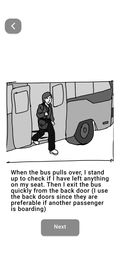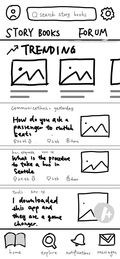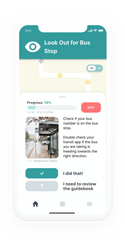
University of Washington, MHCI+D
INFITNITE TRANSIT
ROLE
Product Designer utilizing the end-to-end design process to build out a unique solution to a complex problem.
TEAM
Xue (Miki) Bin, Mehul Shah
YEAR
Fall 2019 (10 weeks)
PRODUCT OVERVIEW
By providing autistic adults reassurance before and during their transit ride through the use of location-based and contextual guides, we reinforced our users' confidence to ride independently to their destination. The three key features we drove that address pain points at each step of the journey includes contextual guidebooks, calling for help, and sharing an experience.
PROCESS
We learned how the mental models of autistic adults require greater contextual information to understand public transit etiquettes, and more importantly, how their misunderstanding of these etiquettes leads to their heightened anxieties and resorting to other modes of transportation. My team and I worked through the design process to address this problem.
Meeting with UW Autism
Center Psychologist
UW Autism Center
Psychologist Feedback
PROBLEM
"Hey, Cheyenne, limited public transportation resources leave autistic people hesitant to ride on their own. How can we help autistic adults to achieve independence when riding public transit?"
Why Autism?
Because Autism Spectrum Disorder is a neurological cognitive disorder, certain environments or scenarios, like confusing bus routes or delayed bus arrivals, are triggers for people with autism. This leaves autistic individuals anxious and confused about what to do next. Since existing solutions only address an autistic child's challenges, I discovered a gap in the market and an opportunity to help autistic adults navigate a ubiquitous space that everyone relates to but is not always accessible to everyone: transportation.
FORMATIVE RESEARCH
Researching academic writings, statistics, participant surveys from online autism communities, and expert interviews with the University of Washington's Autism Center's psychologists and autistic adults, we learned the difficulties users face when riding public transit.
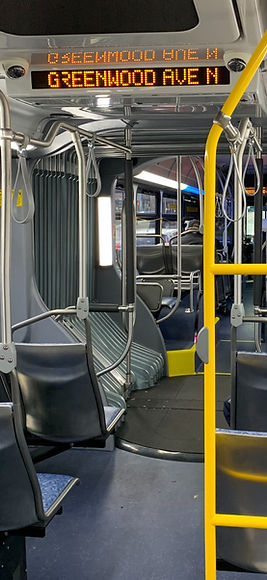.jpg)
Secondary Research.
-
3.5 million Americans live with Autism Spectrum Disorder
-
½ million autistic people will enter adulthood in the next year
-
Autistic people are constrained by limited transportation resources
-
Paratransit
-
Transportation Training
-
Relatives Driving
-
* "I did not know to signal the bus to stop at first. I didn't know if I was supposed to say anything to the bus driver or not. I didn't know that you're not supposed to put your bag on the seat next to you."
— r/autism Reddit User
Primary Findings and Observations.
-
Many autistic people actively engage and share experiences in online platforms such as Reddit and Twitter
-
In our survey, 67% of participants shared they are relieved once getting off their bus ride
-
Their mental model requires explicit, clear instructions in any scenario
-
Though autistic people may want to give context to other transit passengers, exposing their condition may be uncomfortable
PERSONA
Sympathizing with our users' need for explicit instructions, we identified a great number of pain points. I narrowed the list to a succinct representation of participants' obstacles in their transit journeys to streamline communication between stakeholders.

John, Autistic Adult and Inexperienced Rider
Attributes
-
Fascinated by technology,
-
Easily nervous and disoriented in public settings,
-
Has only ridden the bus 5 times to get home
Goals
-
Wants to reach his new destination,
-
Wants to learn how to ride the bus throughout the city,
-
Wants to independently ride public transit
Pain Points
-
Doesn't know what to expect on his public transit ride,
-
Doesn't know how to ask other passengers for help,
-
Panicked, and doesn't know how to request for the bus to stop
IDEATION
After identifying the critical pain points, we ideated over 90 different concepts then downselected, storyboarded, and wireframed through three concepts. Afterward, we formulated design principles to utilize as a framework for our future design decisions and as a way of rationalizing the value add we were eager to bring to our users.

After ideation, I held a brainstorming session with my team to understand what users lack from existing transit applications while also reinforcing why independence is critical for our solution.


Design Principles.
Reassurance
Provide users contextual information of the anticipated experience
Independence
Help users obtain the freedom and ability to travel without assistance
Community Empowerment
Give the autism community their voice to support other autistic adults
WIREFRAMING
After refining our new concepts, we each developed wireframes to represent each user flow. The three flows represent each part of the user's end-to-end journey through contextual guides, gamified tasks, and community forums.
Story Guidebooks.
With the need for explicit instructions, users would be able to reference contextual guidebooks before their commute.
Wireframe sketches by Mehul Shah.
Gamified Tasks.
With gaming, users can complete tasks through their commute to learn and build memory on what to expect during their transit journey.
Wireframe sketches by me.
Community Forums.
Engaging with the community, users can like, comment, and share posts on and about contextual transit guides.
Wireframe sketches by Xue (Miki) Bin.
USABILITY TESTING
We had challenges recruiting participants so we relied on testing with autistic individuals from the online Reddit community while also gathering feedback from family and friends of autistic adults. Continuously learning of their need for explicit information, we reassessed our design response.


Feedback.
-
All participants expressed their dislike for the cartooned visuals, being both childlike and vague in context
-
Though gamifying the experience was fun for some, participants expressed worry about it being a distraction
-
Majority of participants, who engage with their community, strongly favor sharing opinions and ideas with others
* "The first person form comes off a bit childish [...] But I do think it helps visualize the steps which you need to take with using the bus"
* "It seems entertaining and interactive, though I worry about safety or it becoming distracting"
* "It makes it easier if you have a question or problem. You won't need to go to ten apps/websites to find an answer"
USER FLOW
While developing our rough prototype, we simplified the user journey into a flow chart. Now focusing on three main actions, the user can use the app to learn about their commute, track their journey with a guide, and contribute back to their community.


First, we built out our user flow with post-it's so we can easily rearrange or conceptualize alternative flows that best fit our users' needs. Then, while translating the flow digitally, I continued to challenge our initial decisions to assure they align with our design principles.
ITERATION
Now knowing more, we implemented our insights into one unified design. Comprising elements of each concept, we developed the first pass of our location-based guide allowing for community engagement and real-time transit etiquette information.
I took the lead in building out the product design, converting each element from the user flow into a simplified interface.
DESIGN GUIDE
Then we created our visual identity, represented by the infinite icon as the symbol of the autistic community and a reflection of our design principles. Utilizing simple, clean components, highlighted by our color scheme and explicit visuals, our app makes it easy for autistic adults to navigate and learn throughout their journey.




I took the lead in building out the design guide and spec documentation.
SOLUTION
Throughout their transit experience, autistic adults will gain reassurance from contextual guides and location-based notifications to achieve a level of confidence and independence. Then, they may share their experiences with their community, become a contributor, and modify existing guidebooks on the platform and provided more precise information to other autistic users.
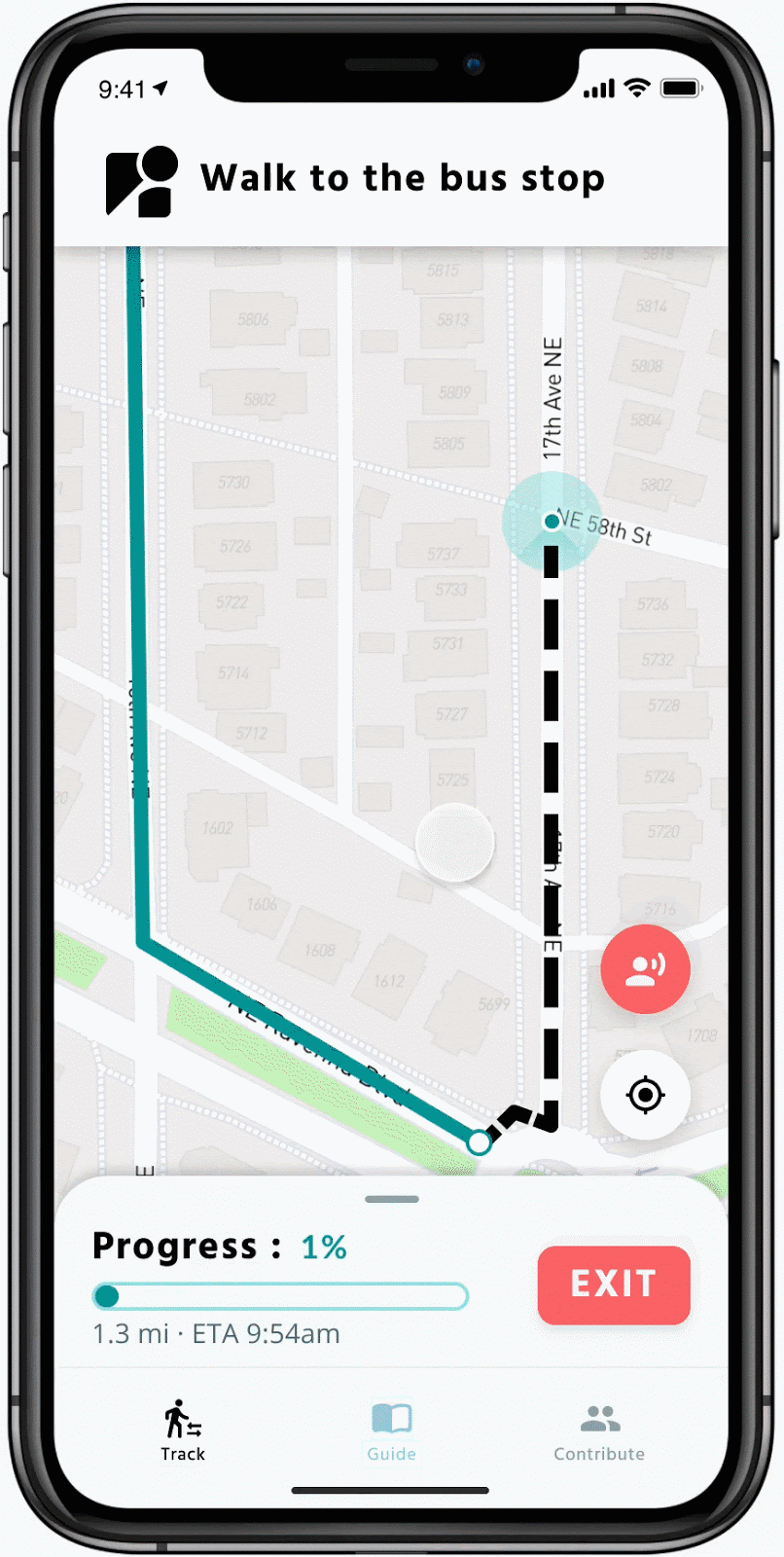

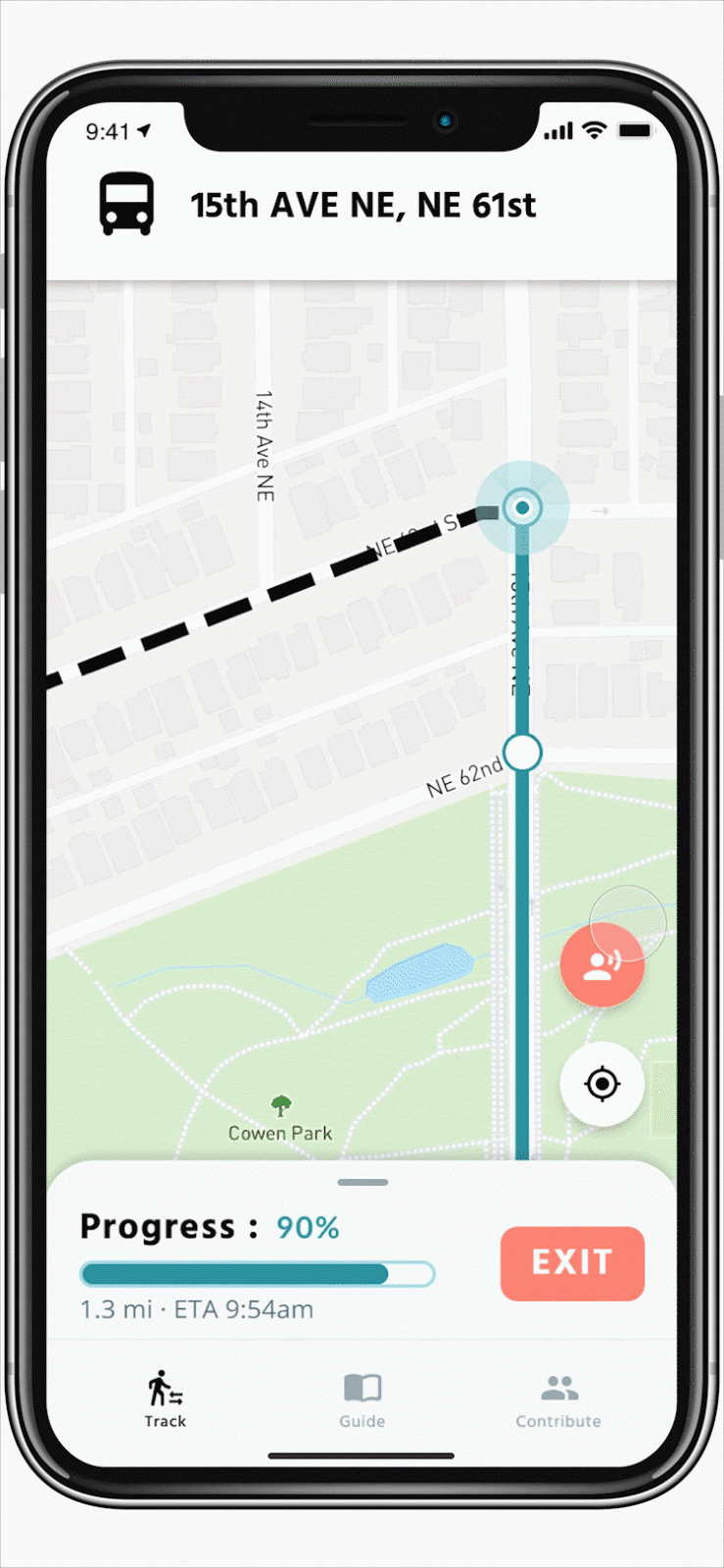

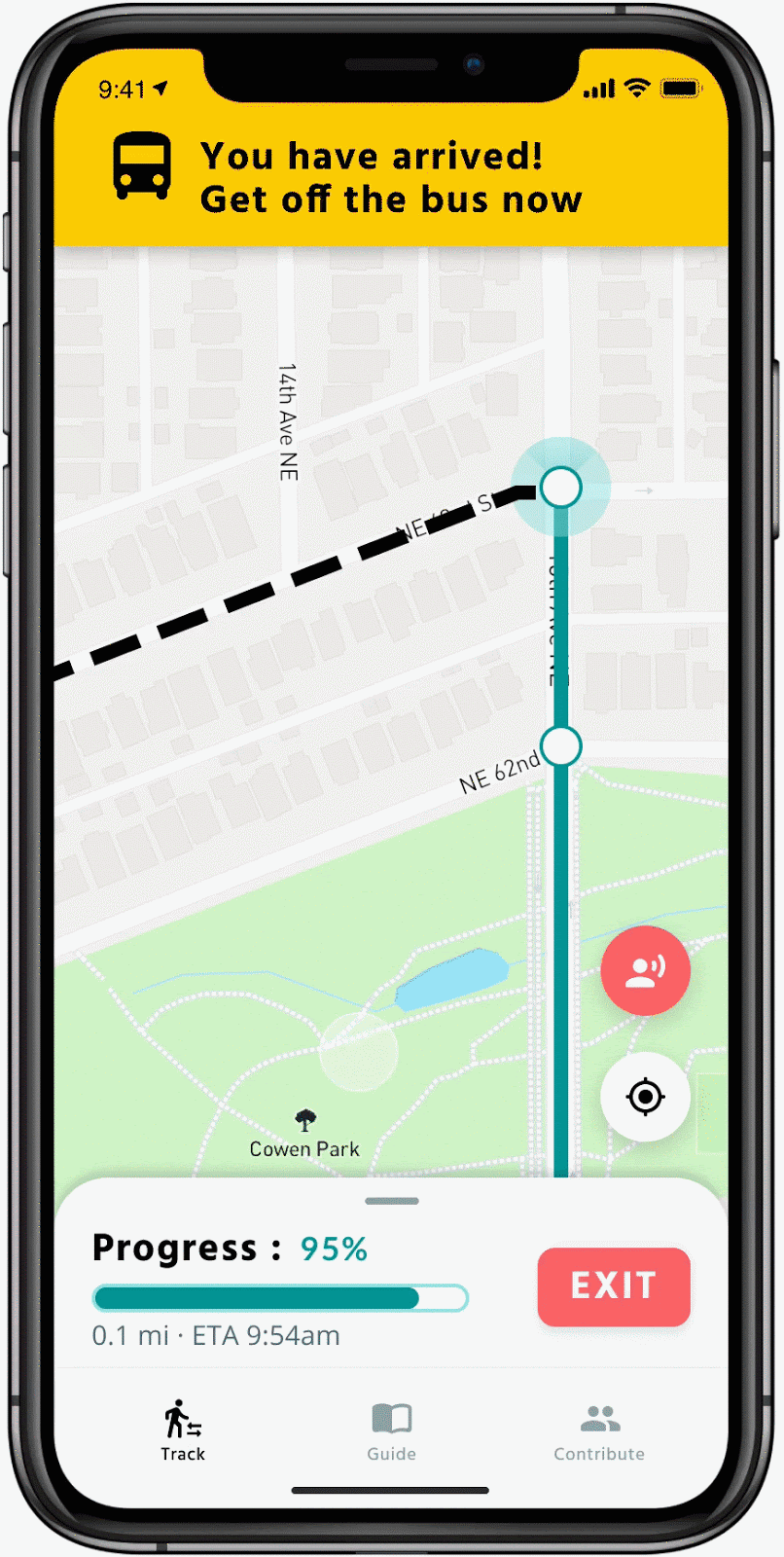

Takeaways.
Reflecting on our product, one component I believe could be better optimized is the request for help. Without time to conduct proper usability testing on this specific feature, we continued our design based on our assumptions. For the next steps, we are looking into connecting our user group with allies of the community while also thinking about inclusivity. Since it’s unrealistic to expect two autistic people riding the same bus in the same direction at the same time, we need to think of other stakeholders to be a resource when in need of help. Allies of the community are one group we would like to test with.
As well, we believe achieving inclusive design means that we arch our scope to anyone who easily makes errors on bus rides and how we can help them, including anyone with disabilities, non-native speakers and first-time riders. For the following projects, I plan to take more time in analyzing different stakeholders to see how they can be enable as an user of the product.




